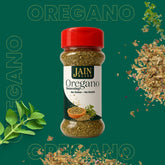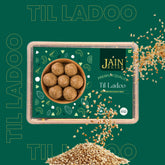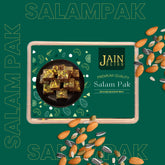JBT11 - Shree Shreyansnath Bhagwan - The Eleventh Tirthankara

Shree Shreyansnath Bhagwan – The Eleventh Tirthankara
Shree Shreyansnath Bhagwan is revered as the 11th Tirthankara of the present age (Avasarpini) in Jainism. He is remembered for his compassion, truthfulness, renunciation, and devotion to Ahimsa (non-violence).
He was born in Simhapuri (modern-day Sihore, Madhya Pradesh, near Sarnath) to King Vishnuvarma and Queen Vishna Devi of the Ikshvaku dynasty. His symbol (lanchhan) is the Rhinoceros, representing strength, resilience, and determination on the spiritual path.
One of the most sacred associations with him is the first-ever act of Jain almsgiving (Daan) — the donation of Ikshu Ras (sugarcane juice) to Lord Rishabhdev Bhagwan, which is celebrated as Akshaya Tritiya, an auspicious festival in Jainism.
Birth and Lineage
-
Parents: King Vishnuvarma and Queen Vishna Devi
-
Birthplace: Simhapuri (Sihore, Madhya Pradesh)
-
Dynasty: Ikshvaku Dynasty
-
Symbol (Lanchhan): Rhinoceros
-
Yaksha: Ishwar Yaksha
-
Yakshini: Maanvi Yakshini Devi
-
Sacred Tree: Tinduka
-
Height: 20 bows (~60 feet)
-
Complexion: Golden (Kanchan Varna)
From a young age, Shreyansnath Bhagwan showed signs of detachment, wisdom, and compassion, reflecting his spiritual destiny.
Previous Birth
In his immediate past life, he was King Nalinigulm, a righteous ruler known for his truthfulness and devotion. He eventually took Diksha (ascetic initiation) and bound the Tirthankara-gotra karma, preparing him for rebirth as a Tirthankara.
Childhood and Renunciation
Born as a prince, he had access to royal comforts, yet his heart was drawn to spirituality. From an early age, he demonstrated detachment from worldly pleasures and compassion for all living beings.
Eventually, he renounced royal life, took Diksha, and engaged in deep meditation and penance to purify his soul.
Keval Gyan (Enlightenment)
After rigorous meditation and austerities, Shreyansnath Bhagwan attained Keval Gyan (infinite knowledge).
His enlightenment revealed the eternal truths of karma, liberation, and the soul’s purity. After this, he established the Samavasaran (divine preaching hall) and guided countless beings toward Moksha (liberation).
His teachings emphasized:
-
Ahimsa (Non-violence) – compassion for all life forms.
-
Satya (Truth) – honesty in thought, word, and action.
-
Aparigraha (Non-possession) – detachment from material desires.
-
Spiritual Detachment – renunciation of worldly attachments for liberation.
Nirvana (Liberation)
-
Place: Sammed Shikharji (Parasnath Hills, Jharkhand)
-
Time: On the third day of the dark half of Shravan month
Shree Shreyansnath Bhagwan attained Moksha, along with 1000 other saints, and became a Siddha — a liberated soul, free from the cycle of birth and death.
Hidden & Spiritual Insights
-
First Almsgiving (Daan): He is associated with the first act of Jain almsgiving — Ikshu Ras (sugarcane juice) to Lord Rishabhdev, marking the festival of Akshaya Tritiya.
-
Royal Lineage: Belonged to the Ikshvaku dynasty, the same as several other Tirthankaras, including Lord Rishabhdev.
-
Yaksha-Yakshini: Protected and served by Ishwar Yaksha and Maanvi Yakshini Devi.
-
Spiritual Impact: His compassionate teachings inspired both kings and common people to embrace Jain dharma.
Frequently Asked Questions (FAQs)
Q1. What is Shree Shreyansnath Bhagwan’s connection to Akshaya Tritiya?
👉 He is associated with the first Daan (donation) of Ikshu Ras (sugarcane juice) to Rishabhdev Bhagwan, which marks the origin of the Jain festival Akshaya Tritiya.
Q2. Where did Bhagwan Shreyansnath attain Nirvana?
👉 He attained Nirvana at Sammed Shikharji (Parasnath Hills, Jharkhand).
Q3. What is his symbol (lanchhan)?
👉 His symbol is the Rhinoceros, representing fearlessness, strength, and determination.
Q4. How did he attain Keval Gyan?
👉 Through deep meditation, penance, and detachment from worldly desires, he attained infinite knowledge (Keval Gyan).
Q5. Who were his Yaksha and Yakshini?
👉 Ishwar Yaksha Dev and Maanvi Yakshini Devi served as his divine attendants (Shaasan Dev & Devi).

































